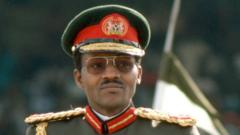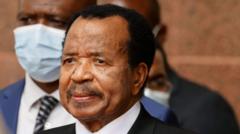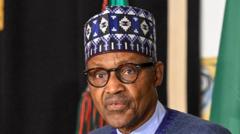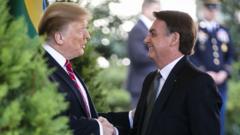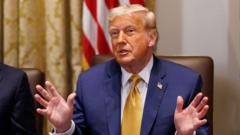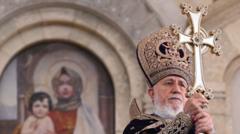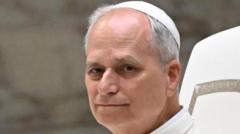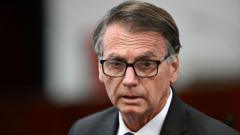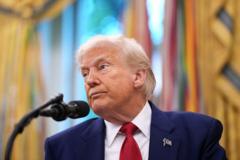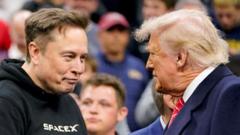As voting begins for the next Pope, cardinals will partake in a deeply spiritual process, forging consensus under the watchful eyes of faithful eager for the results.
Conclave Preparations Underway as Cardinals Gather to Elect Next Pope
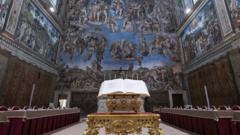
Conclave Preparations Underway as Cardinals Gather to Elect Next Pope
The historic election of the Catholic Church's 267th pope is set to commence in the iconic Sistine Chapel, with 133 cardinals participating in a sacred and secretive ceremony.
The time has come for the Catholic Church to continue its spiritual journey as the conclave to elect the 267th pope is set to begin in the Sistine Chapel. This pivotal ceremony will take place on Wednesday evening, gathering 133 cardinals who will partake in the sacred task of choosing their new leader.
The day will unfold with a mass at St Peter's Basilica, starting at 10:00 AM local time, led by Cardinal Giovanni Battista Re, who oversaw the funeral of Pope Francis. As the cardinals engage in this solemn event, a critical step will occur in the early afternoon when mobile signals within Vatican territory are disabled, ensuring that the participants remain disconnected from outside communication.
Shortly after, the cardinals will convene in the Pauline Chapel and parade into the Sistine Chapel while singing a litany and the hymn Veni Creator, invoking divine guidance. Once inside, they will take an oath of secrecy on the Gospel that binds them to confidentiality regarding the election process.
The election will kick off with the announcement of “extra omnes,” signifying to all non-cardinals that they must leave, thus beginning the cardinals' isolation. This moment marks the sealing of the conclave, where entrances will be locked with lead seals by Vatican officials, ensuring no external influence can breach the intensive process.
As they cast their votes, the first ballot will be crucial despite the rarity of a pope being elected on the first attempt. It will shed light on which candidates have garnered initial support, prompting discussions for a unified choice among the cardinals.
If a two-thirds majority isn’t achieved during the initial voting, the cardinals will retreat to the Casa Santa Marta for discussions over dinner, fostering conversations that might lead to consensus on potential candidates. The kitchen staff are also sworn to secrecy, ensuring all proceedings remain confidential.
The conclave holds a rich history, with contemporary experiences suggesting that electing a new leader can often be concluded within two days. However, uncertainty looms around how quickly this conclave may conclude, as drawn-out discussions can reflect deeper divides.
Outside the chapel, the faithful await the visible symbol of the next pope's election, keeping vigilant eyes on the chimney—the signal of the new leadership to come in the Catholic Church.
The day will unfold with a mass at St Peter's Basilica, starting at 10:00 AM local time, led by Cardinal Giovanni Battista Re, who oversaw the funeral of Pope Francis. As the cardinals engage in this solemn event, a critical step will occur in the early afternoon when mobile signals within Vatican territory are disabled, ensuring that the participants remain disconnected from outside communication.
Shortly after, the cardinals will convene in the Pauline Chapel and parade into the Sistine Chapel while singing a litany and the hymn Veni Creator, invoking divine guidance. Once inside, they will take an oath of secrecy on the Gospel that binds them to confidentiality regarding the election process.
The election will kick off with the announcement of “extra omnes,” signifying to all non-cardinals that they must leave, thus beginning the cardinals' isolation. This moment marks the sealing of the conclave, where entrances will be locked with lead seals by Vatican officials, ensuring no external influence can breach the intensive process.
As they cast their votes, the first ballot will be crucial despite the rarity of a pope being elected on the first attempt. It will shed light on which candidates have garnered initial support, prompting discussions for a unified choice among the cardinals.
If a two-thirds majority isn’t achieved during the initial voting, the cardinals will retreat to the Casa Santa Marta for discussions over dinner, fostering conversations that might lead to consensus on potential candidates. The kitchen staff are also sworn to secrecy, ensuring all proceedings remain confidential.
The conclave holds a rich history, with contemporary experiences suggesting that electing a new leader can often be concluded within two days. However, uncertainty looms around how quickly this conclave may conclude, as drawn-out discussions can reflect deeper divides.
Outside the chapel, the faithful await the visible symbol of the next pope's election, keeping vigilant eyes on the chimney—the signal of the new leadership to come in the Catholic Church.


